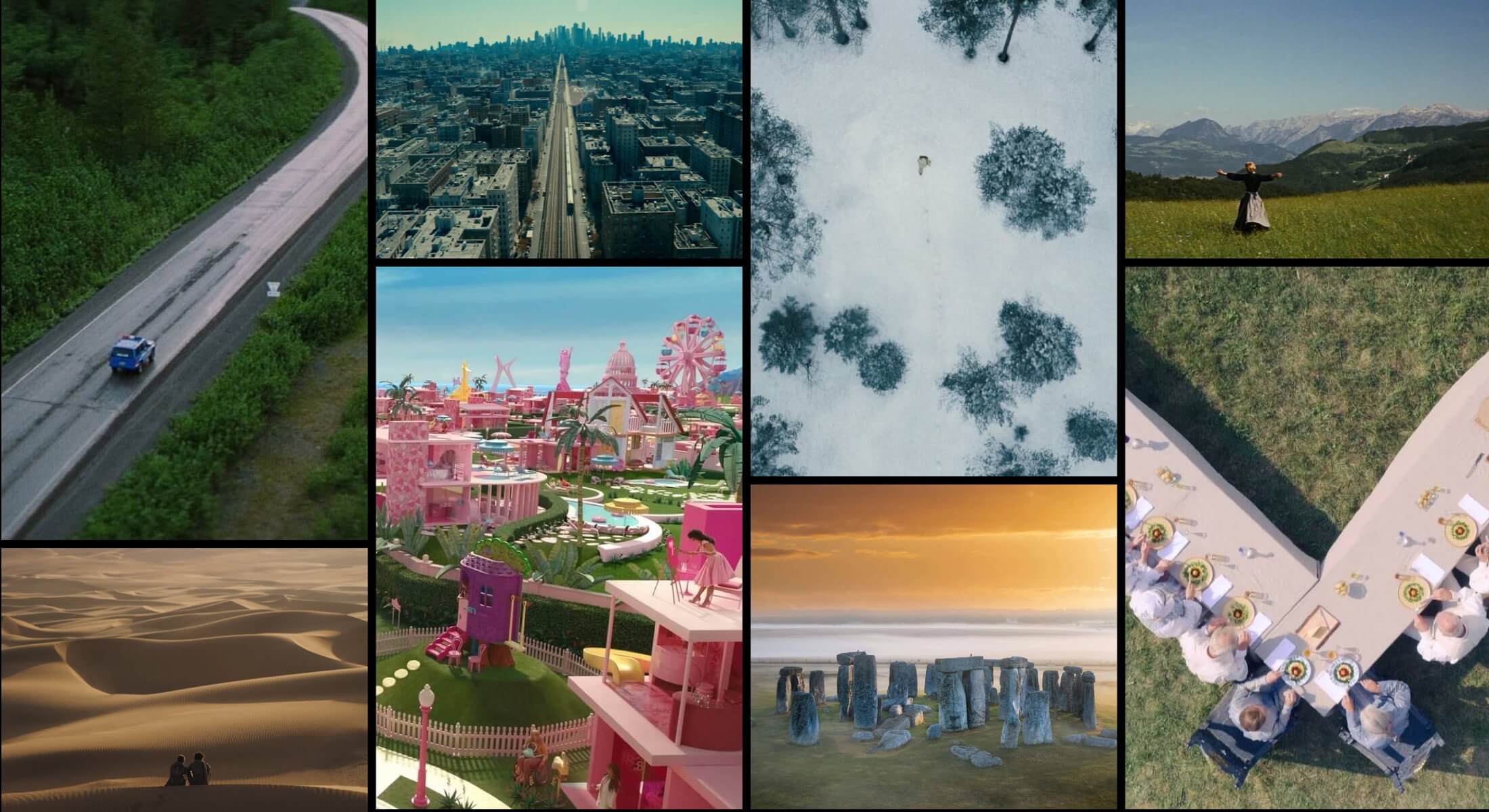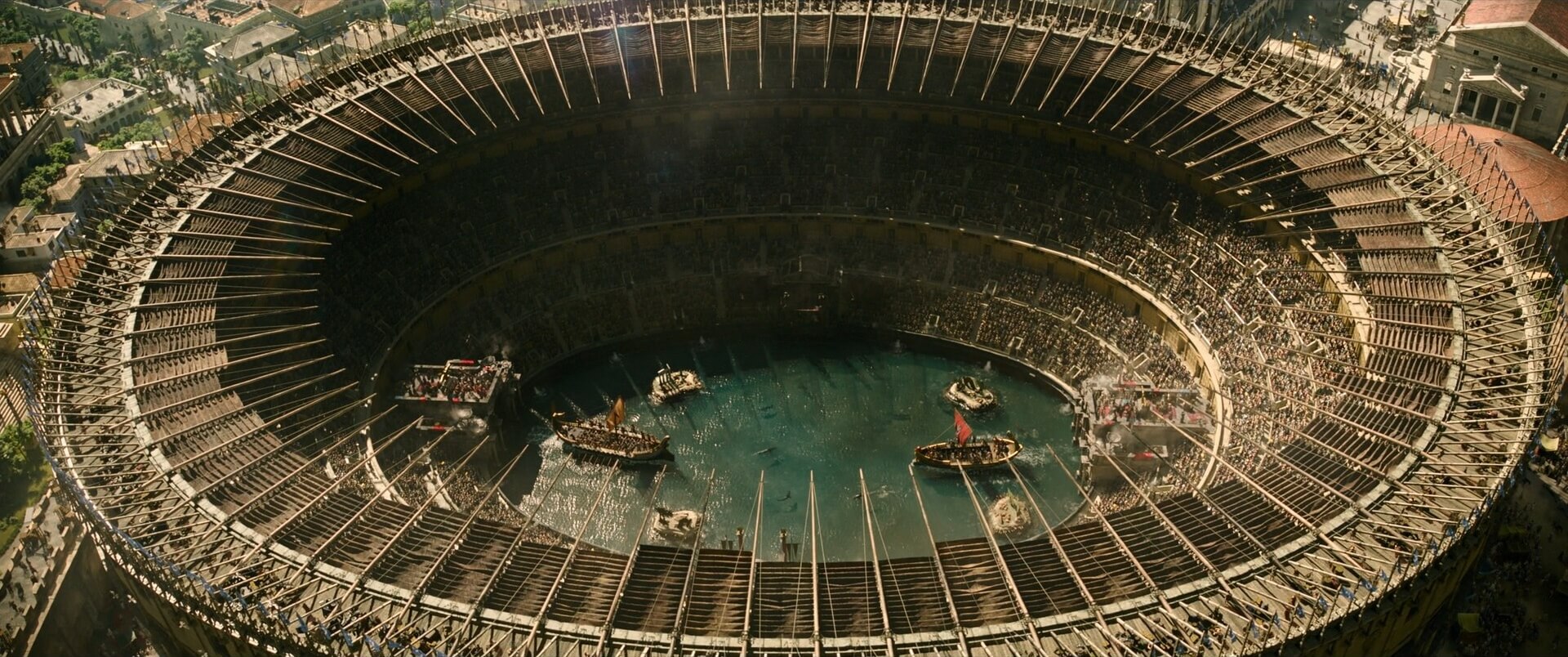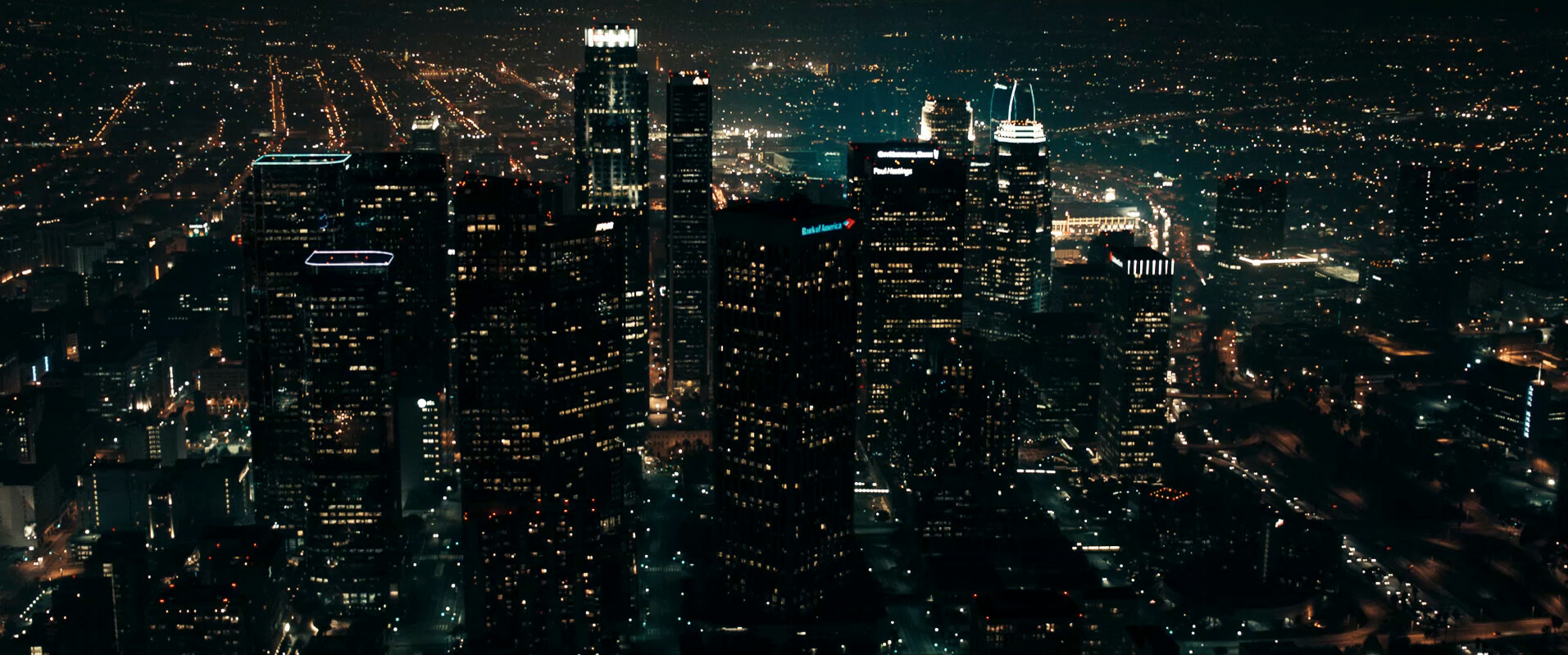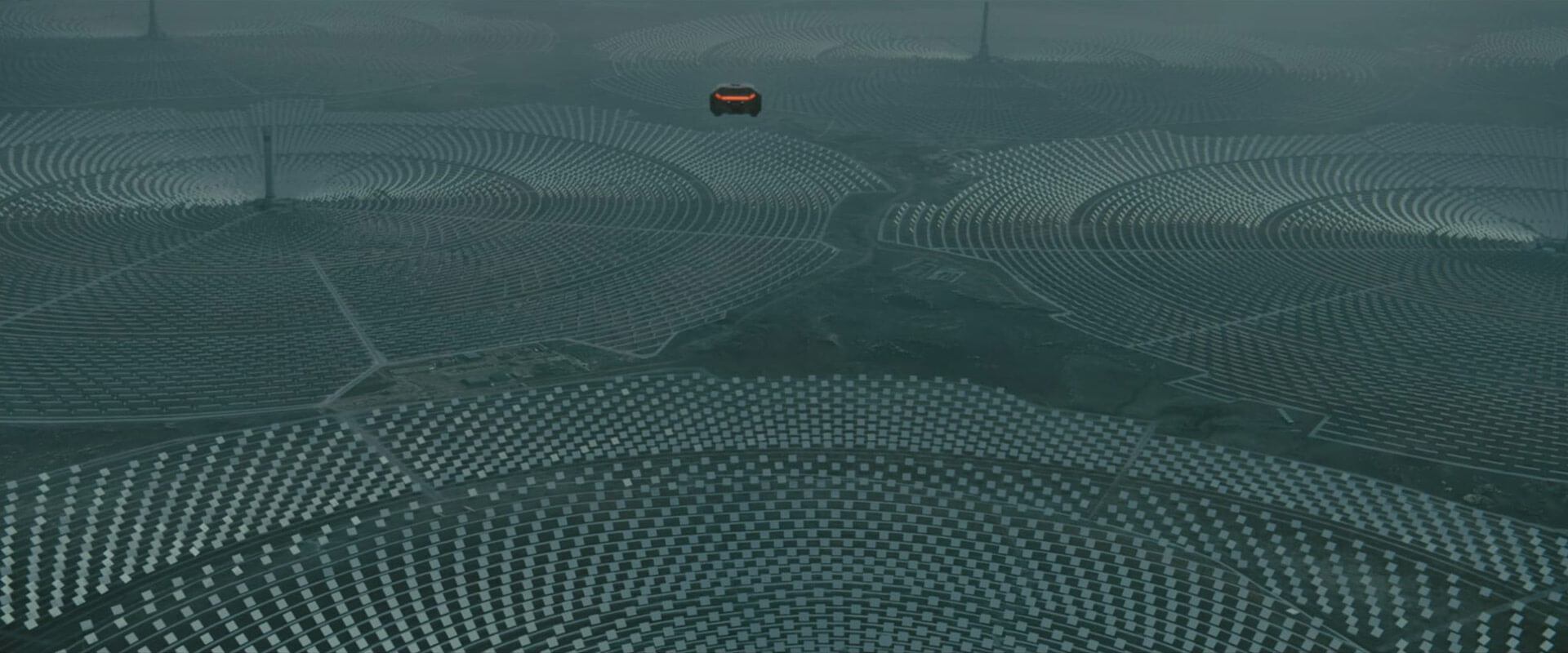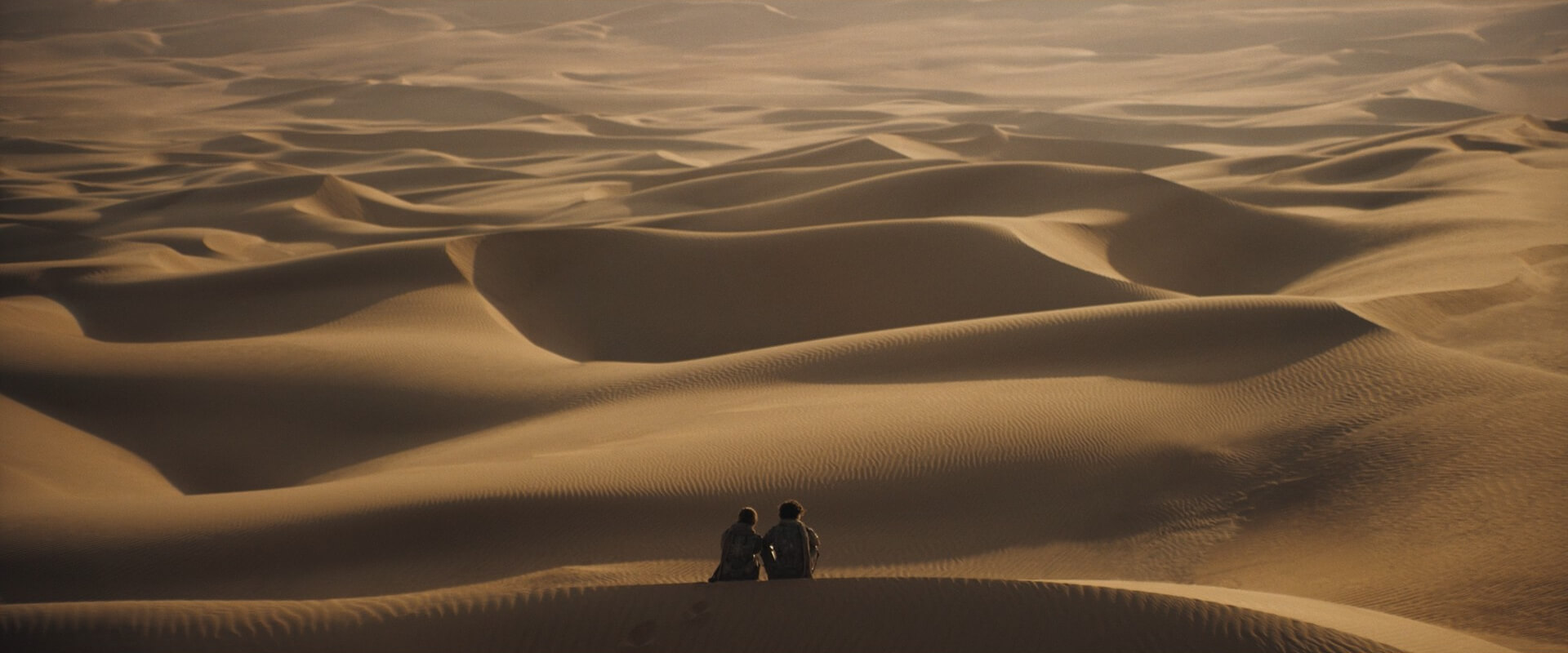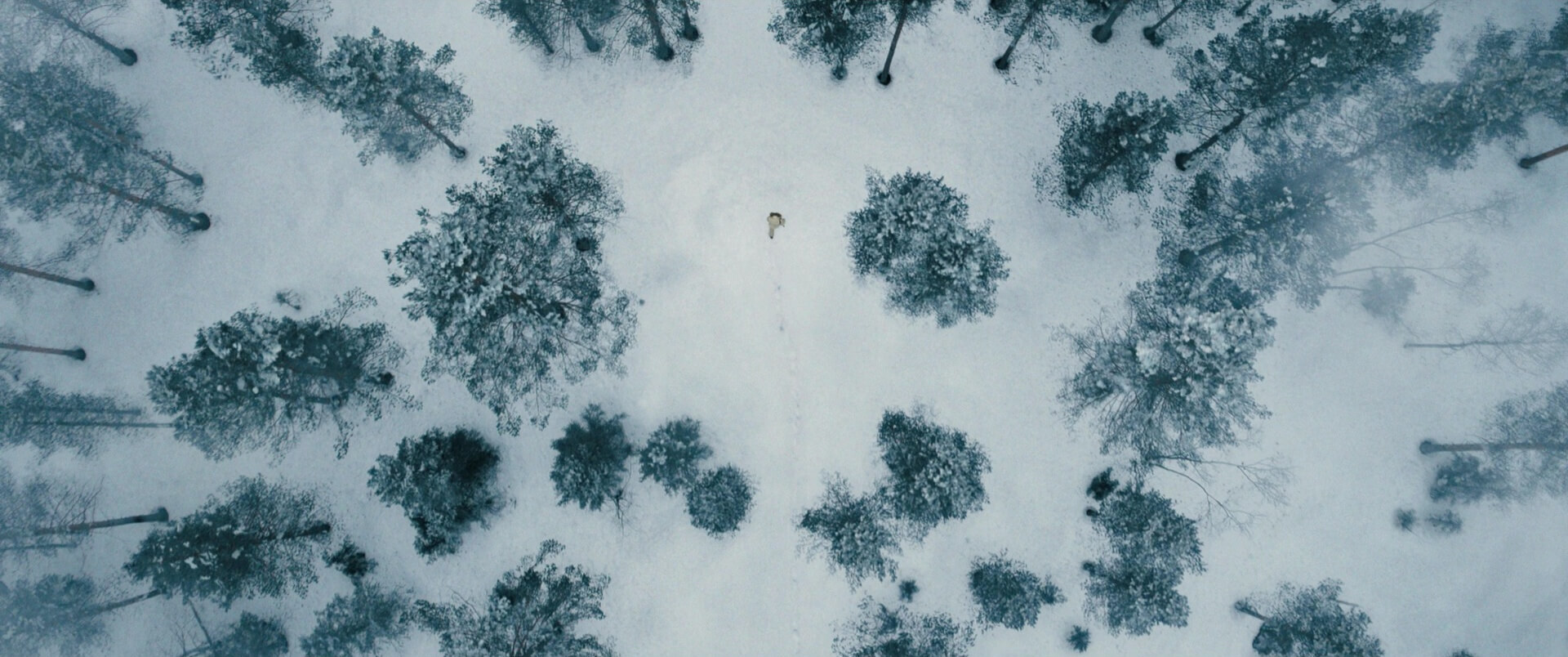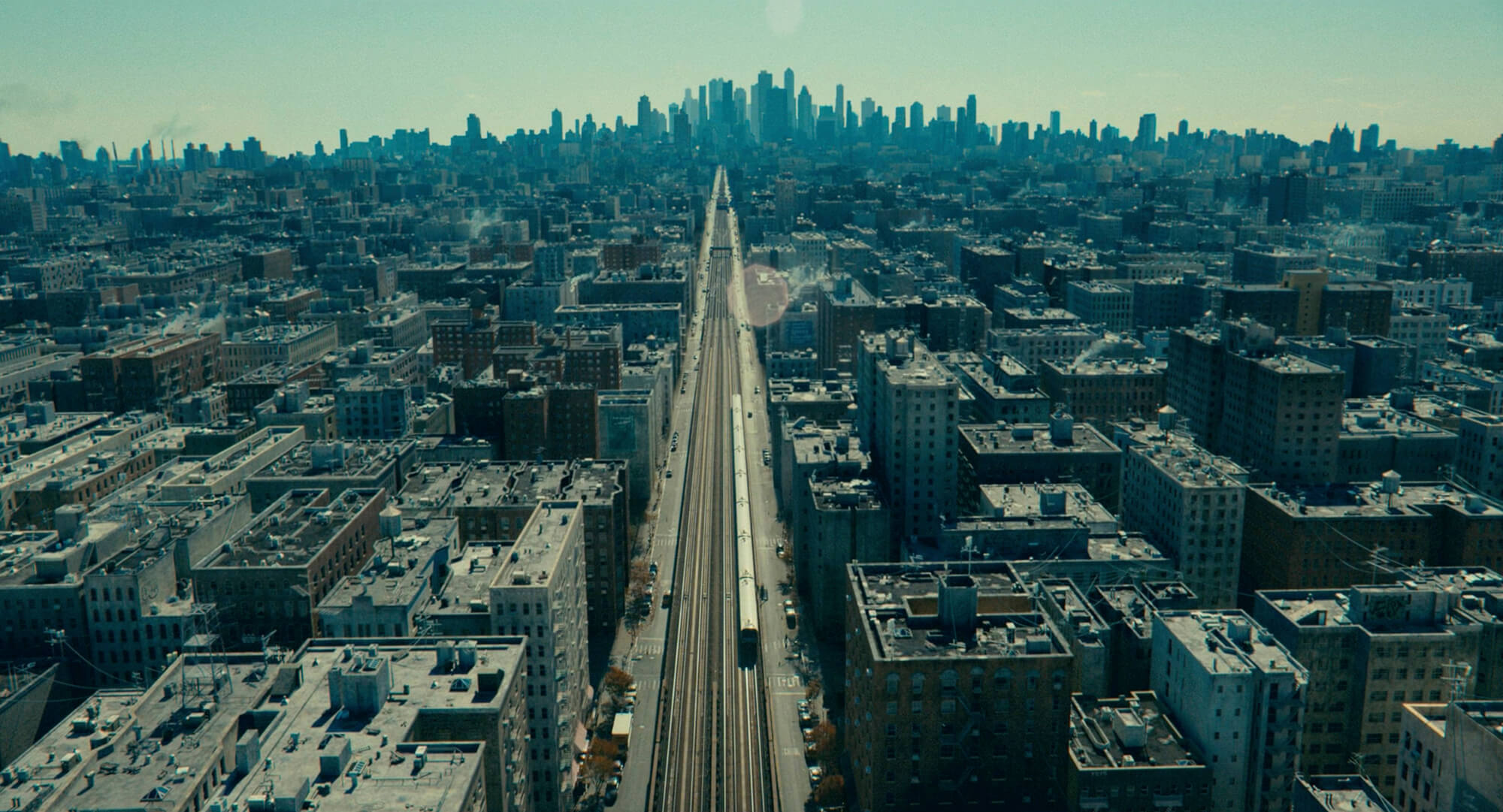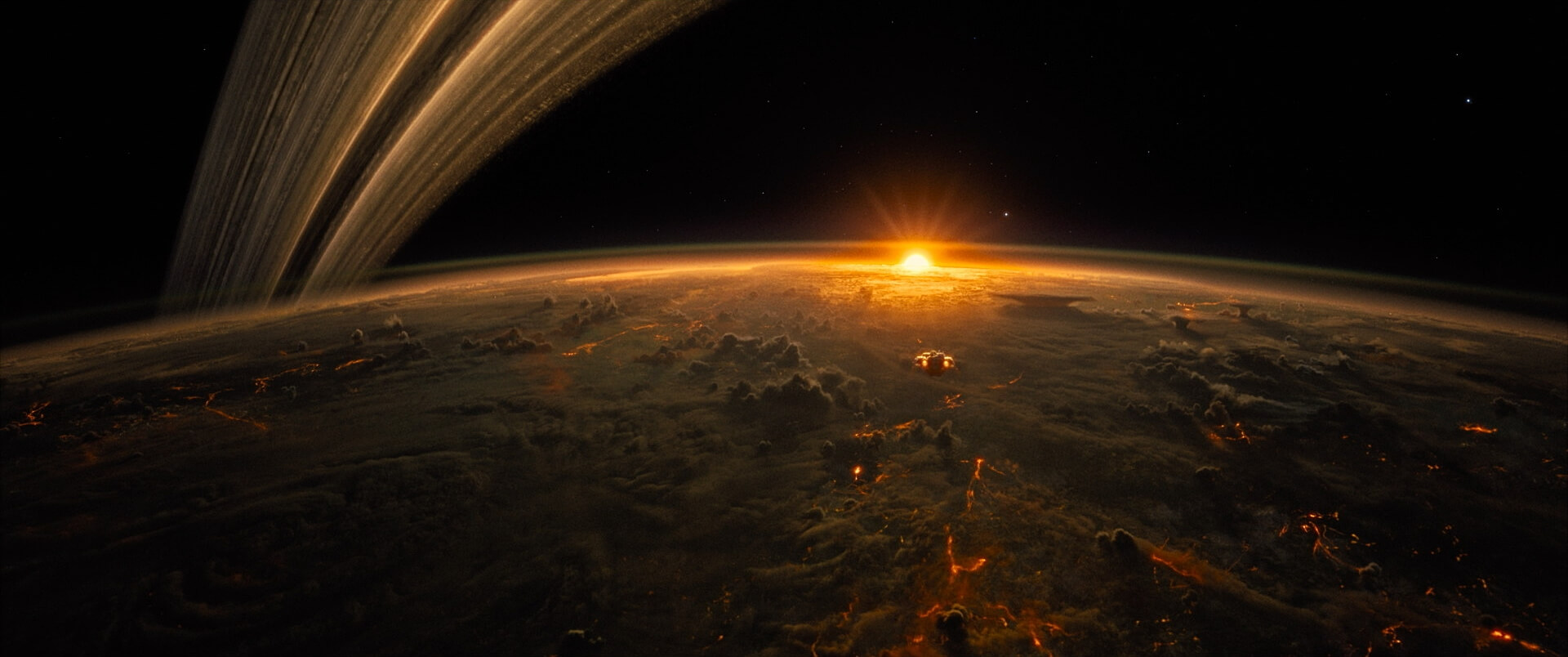home → Camera Angles → Aerial Shot
Aerial shot definition
What is an aerial shot?
An aerial shot captures a scene from high above to provide a bird’s-eye view. This elevated perspective is often used to showcase scale or geography.
For an in-depth exploration of this technique, check out our full guide to aerial shots, complete with examples and breakdowns.
Filming aerial shots
Aerial shot examples
It’s helpful to see aerial shots in action before exploring how they operate within visual storytelling. Browse this curated selection of aerial shots to get a sense of their uses across films.
Highlights scale
Establishes setting
Creates emotional distance
Emphasizes patterns
Usages
What does an aerial shot do?
Aerial shots are always striking, whether it’s in film, photography, music videos, or advertising. Captured from high above (often with drones or helicopters) they offer an elevated view that can transform how viewers perceive the setting. Here are a few storytelling uses:
Isolation
Characters are shown alone, surrounded by a massive landscape. The aerial shot underscores their smallness by revealing more and more of the environment.
Vulnerability
Tracking with the characters from high above gives the impression that they are isolated, perhaps powerless, and perhaps being followed.
Environment
Aerial shots can emphasize the setting a character finds themselves in. Introducing the audience to this world at the same time.
Scale
Aerial shots can highlight the vastness or complexity of a location. Plus the movement adds some dynamism to the spectacle.
Aerial shot differences
Aerial shot vs overhead shot
Aerial shots and overhead shots both involve looking down from above. But they serve different purposes and are captured in different ways.
An overhead shot is taken directly above the subject, usually at a 90-degree angle. An aerial shot, on the other hand, is typically captured from a much higher altitude using drones, helicopters, or cranes, and is often wider in scope, used to establish setting or movement across a large area. All overhead shots look down, but not all overhead shots are aerial.
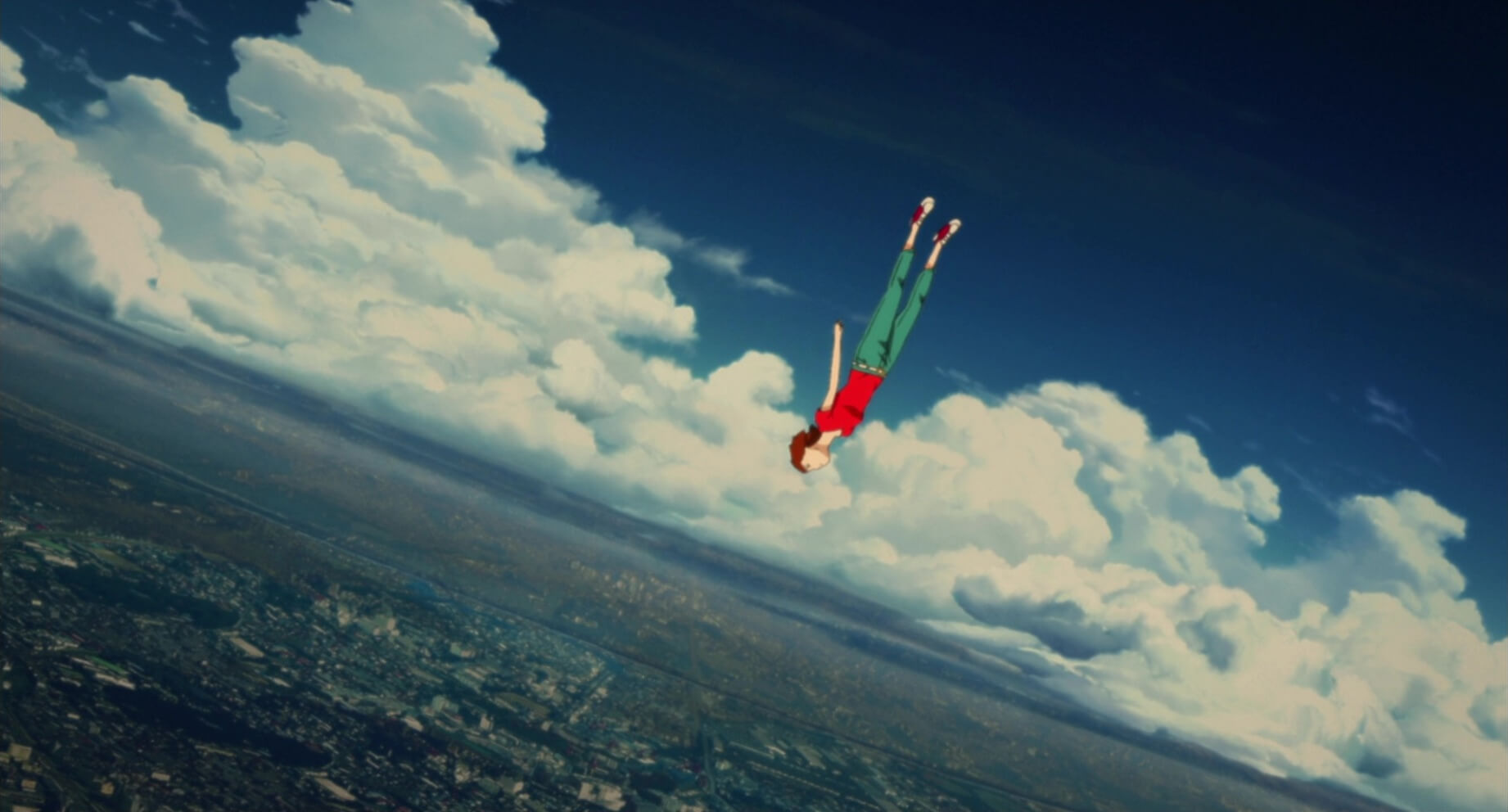
Case Study
Shot listing an aerial shot
So how can you use an aerial shot? Look no further than this great battle scene from The Lord of the Rings: The Return of the King. Could the scale on display here have been captured in any other way than with aerial shots? Doubtful.
Click the shot list below to take a closer look at the entire scene.
While the aerial shot often feels grand and attention-grabbing, it’s also an incredibly adaptable technique.
Let’s explore the different ways this high-altitude perspective can elevate storytelling and create new layers of meaning.
Unexpected combos
How can you use an aerial shot with other camera techniques?
How to combine an aerial shot
Aerial shots are a versatile addition to any filmmaker’s visual language. While impactful on their own, they gain even more power when paired with other techniques. Here are some creative ways aerial shots can be combined with different cinematic approaches:
- Crane Movement: Integrating crane motion into an aerial shot allows for smooth vertical travel.
- Drone Tracking: Following a subject from above with a drone can emphasize a journey or a pursuit.
- Zoom Out: Starting tight and zooming out from a high altitude can reveal spatial context, often used to show isolation or vastness.
- Wide Lens: Aerial wide shots stretch across large environments, capturing geography or crowd dynamics.
- Match Cut: Transitioning from a ground-level shot to an aerial view (or vice versa) through a match cut can create interesting visual continuity.
Frequently asked questions about the aerial shot
An aerial shot captures a scene from high above, providing a sweeping view of the landscape or action below.
While both are taken from above, a bird’s-eye shot is usually a more direct, straight-down view (usually at a 90-degree angle). An aerial shot can be from various heights and angles. That said, they often are used interchangeably.
Aerial shots are used to:
- Establish setting
- Highlight scale
- Create epic visuals
Show movement or patterns from above
They’re typically captured using drones, helicopters, cranes, or even airplanes equipped with stabilized cameras to get smooth, high-altitude footage.
Fear not. You can achieve aerial shots by:
- Using a crane or jib arm for elevated views
- Shooting from a tall building
- Using cable rigs to carry the camera above the scene
